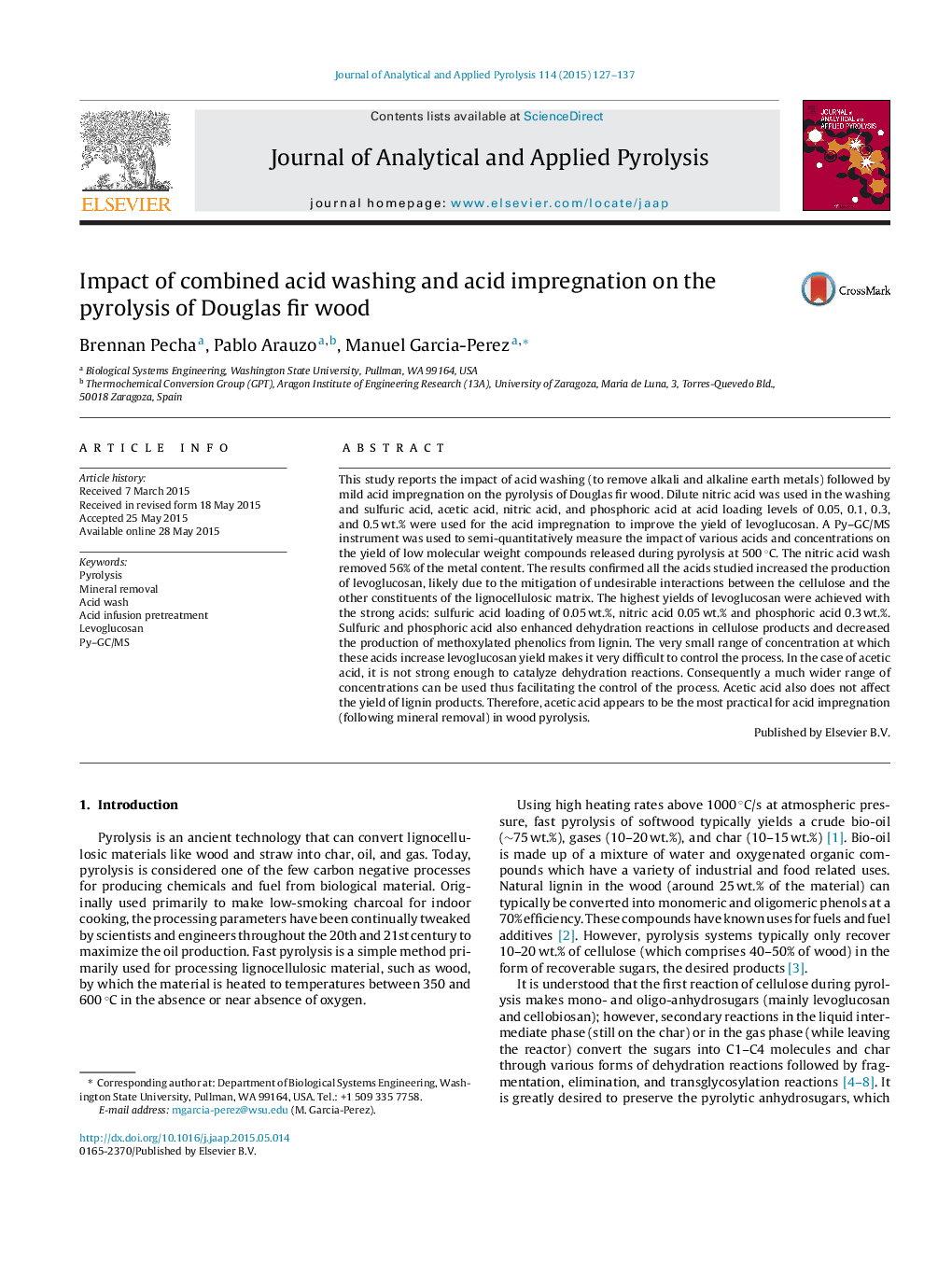| Article ID | Journal | Published Year | Pages | File Type |
|---|---|---|---|---|
| 1196972 | Journal of Analytical and Applied Pyrolysis | 2015 | 11 Pages |
•Acid washing followed by acid impregnation in Douglas fir pyrolysis.•A nitric acid wash removed the majority of alkali and alkaline earth metals.•Addition of H2SO4, CH3COOH, HNO3, and H3PO4 after wash enhanced sugars.•Sulfuric acid and acetic acid addition enhanced the yield of levoglucosan the best.•There is an ideal quantity of acid impregnation; further addition is detrimental.
This study reports the impact of acid washing (to remove alkali and alkaline earth metals) followed by mild acid impregnation on the pyrolysis of Douglas fir wood. Dilute nitric acid was used in the washing and sulfuric acid, acetic acid, nitric acid, and phosphoric acid at acid loading levels of 0.05, 0.1, 0.3, and 0.5 wt.% were used for the acid impregnation to improve the yield of levoglucosan. A Py–GC/MS instrument was used to semi-quantitatively measure the impact of various acids and concentrations on the yield of low molecular weight compounds released during pyrolysis at 500 °C. The nitric acid wash removed 56% of the metal content. The results confirmed all the acids studied increased the production of levoglucosan, likely due to the mitigation of undesirable interactions between the cellulose and the other constituents of the lignocellulosic matrix. The highest yields of levoglucosan were achieved with the strong acids: sulfuric acid loading of 0.05 wt.%, nitric acid 0.05 wt.% and phosphoric acid 0.3 wt.%. Sulfuric and phosphoric acid also enhanced dehydration reactions in cellulose products and decreased the production of methoxylated phenolics from lignin. The very small range of concentration at which these acids increase levoglucosan yield makes it very difficult to control the process. In the case of acetic acid, it is not strong enough to catalyze dehydration reactions. Consequently a much wider range of concentrations can be used thus facilitating the control of the process. Acetic acid also does not affect the yield of lignin products. Therefore, acetic acid appears to be the most practical for acid impregnation (following mineral removal) in wood pyrolysis.
